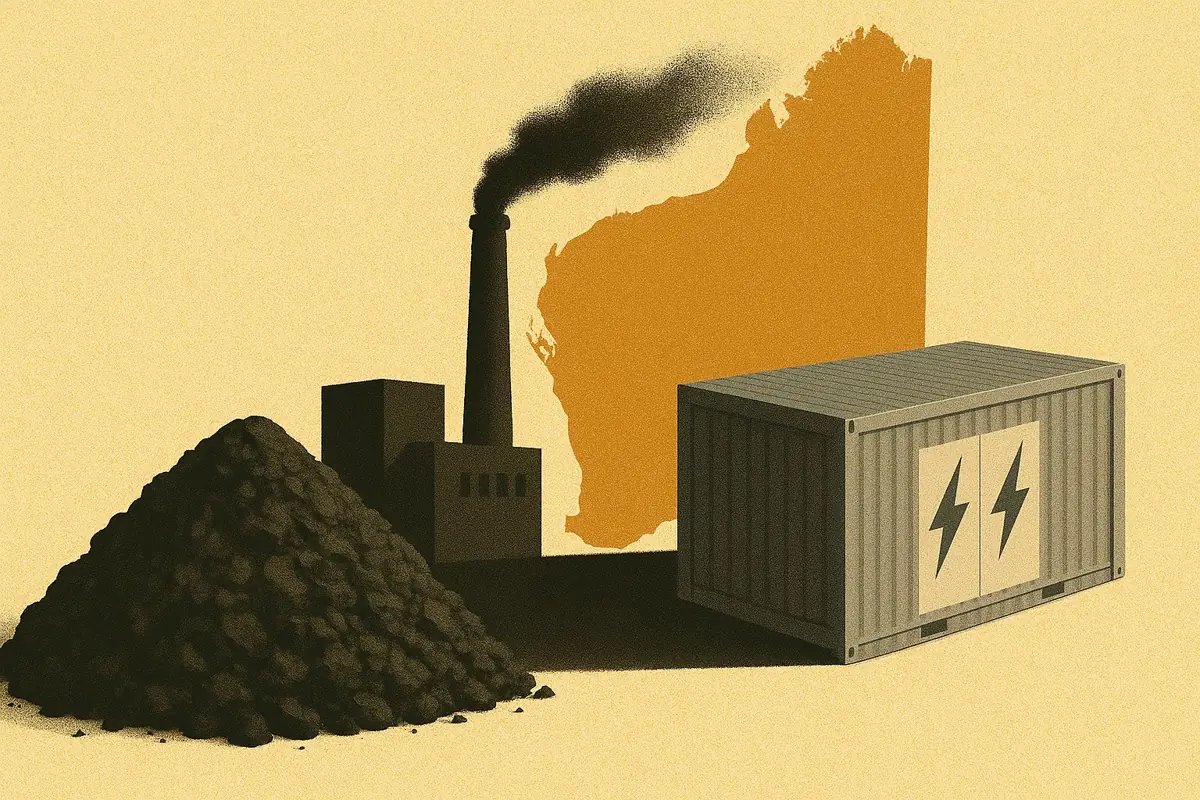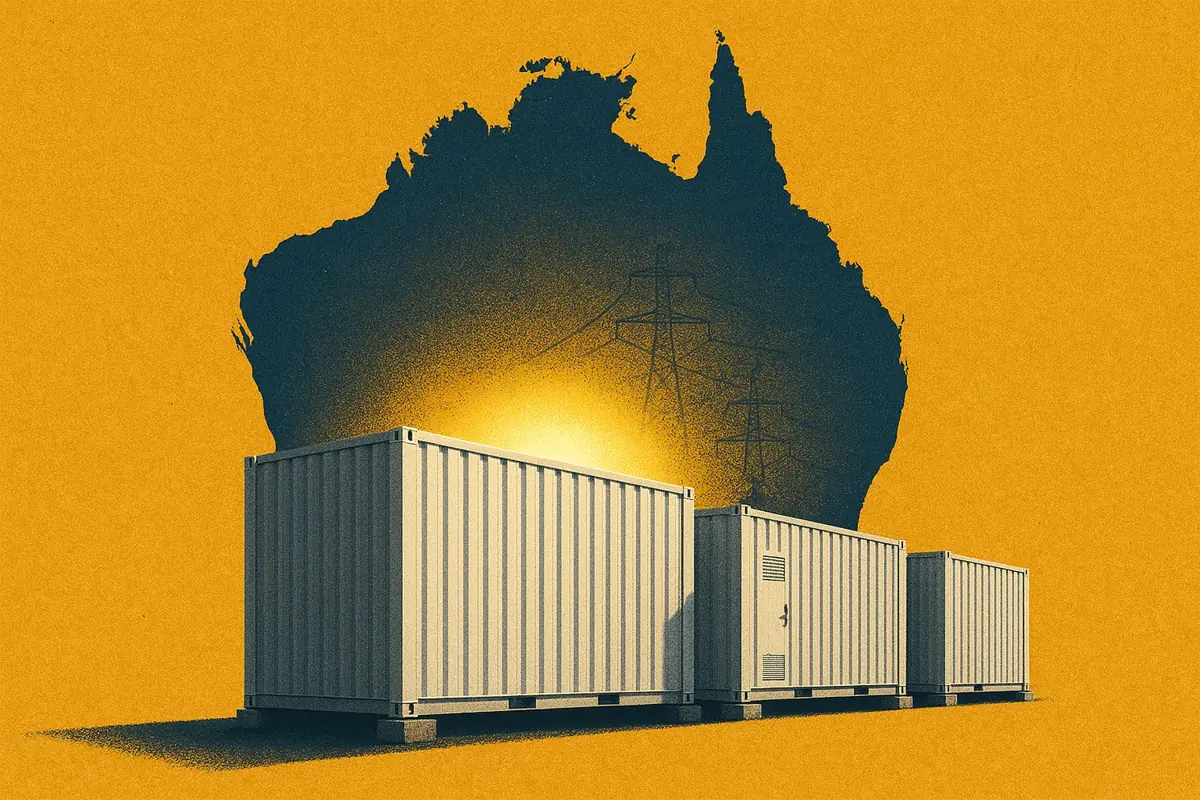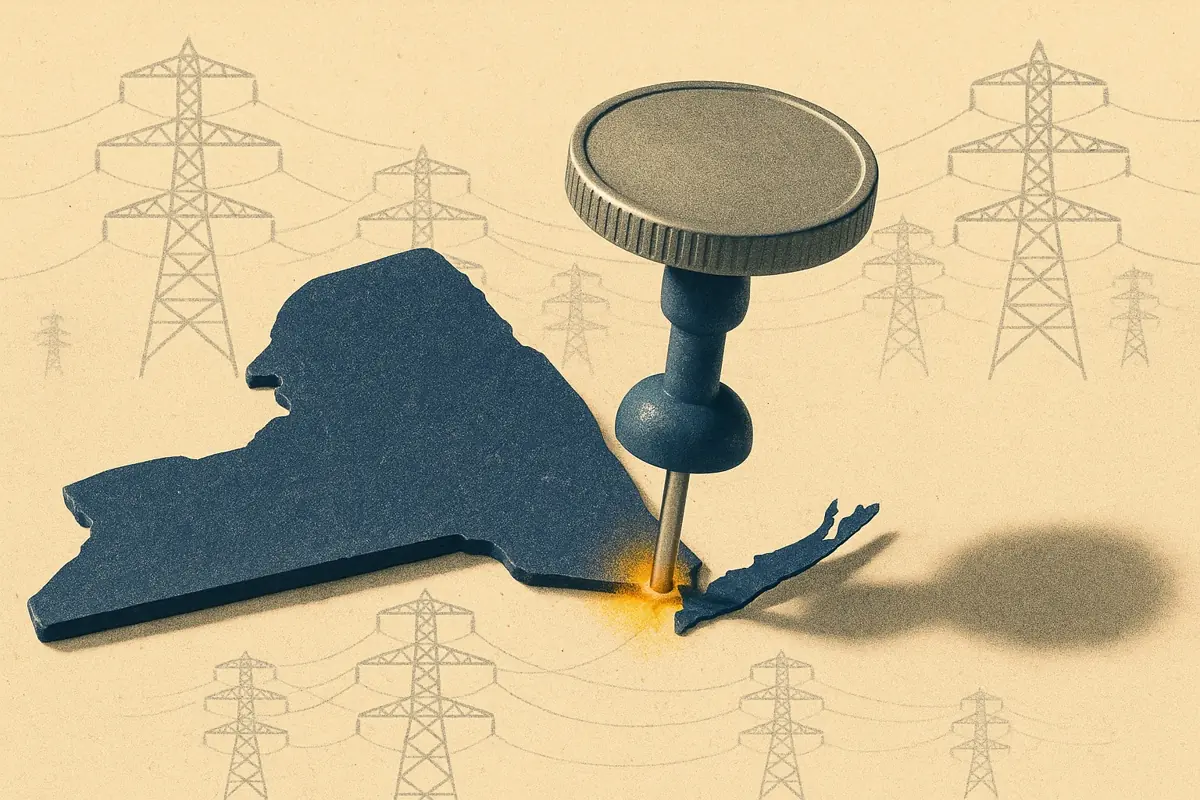Executive Summary
NYISO’s December auction signals stronger capacity revenues for batteries in Long Island and New York City. The Winter 2025–2026 demand curves raise price caps in both zones while shifting requirements in opposite directions.
Battery energy storage resources in New York state provide only 14 MW of accredited winter UCAP today with 2 GW expected by 2030. December clearing prices therefore signal future storage revenue potentials rather than reflect current revenues. Long Island shows the strongest upward price potential. New York City maintains its price premium despite lower capacity requirements. Statewide and downstate zones will likely align with last winter unless supply shifts.
This winter’s demand curves show three measurable changes:
- New York City’s capacity requirement decreases while Long Island’s increases. These shifts alter how close each zone sits to scarcity.
- Reference and maximum clearing prices rise in New York City and Long Island. These increases expand the winter price range if supply tightens.
- Updated CAFs for 2025-26 increase UCAP value for four-hour and longer systems. These changes alter dependable capacity revenue per MW.
1. Capacity payments can contribute more than 50% of BESS revenues
Battery energy storage in New York earns revenue from energy arbitrage, ancillary services, and dependable capacity. Dependable capacity revenue forms a measurable share of annual income.
In 2023 and 2024, a hypothetical four-hour battery could have earned up to 50% of its total revenues from capacity payments alone. Six- and eight-hour systems receive a higher share because higher Capacity Accreditation Factors (CAFs) drive higher capacity payments per MW.
Capacity revenue and its dependability are especially important to consider when it comes to evaluating different durations of BESS projects. This is particularly true as:
- Revenue becomes an increasingly large portion of the revenue stack for longer (i.e. 6+ hour) duration resources
- Capacity revenue can vary substantially between the summer and winter months as BESS Capacity Accreditation Factors vary per season.
For many projects, dependable capacity revenue determines whether returns remain above financing thresholds in New York alongside the Index Storage Credit.
2.Understanding NYISO's capacity market structure
NYISO's demand curves replace bids to purchase capacity in monthly auctions. The curves establish clearing prices based on the relationship between certified supply and minimum reliability requirements.
The mechanism works as follows: NYISO calculates total certified capacity for each zone. Generators submit offers to sell capacity. The demand curve intersects with total supply to determine the clearing price. All accepted offers receive this uniform clearing price.
When certified supply falls below the minimum requirement, prices rise along the steep portion of the curve—incentivizing new entry. As supply exceeds the requirement, prices fall along the gentler slope—signaling surplus. When supply reaches 112-118% of the requirement (depending on zone), prices hit zero at the "zero-crossing point."
To keep these calculations current, NYISO operates on a four-year cycle: a full stakeholder process resets the curves, then annual updates using predetermined formulas maintain them between resets. The current cycle runs from 2025 to 2029. This reset introduced a significant change: NYISO established separate summer and winter demand curves for each capacity zone, reflecting different seasonal reliability risks.
New York City Requirements Drop While Long Island Tightens
Long Island's winter maximum clearing price jumped to $70.81/kW-month—overtaking New York City as the state's highest scarcity cap. This reverses the summer 2024 pattern, where NYC's $33.05/kW-month maximum exceeded Long Island's $27.78/kW-month.
The seasonal shift is dramatic: Long Island's winter maximum sits 155% above its summer level, while NYC's increased 66%. Less-constrained zones show smaller premiums: Downstate rose 12% to $27.72/kW-month and statewide increased 25% to $22.62/kW-month.
Long Island now offers the highest potential scarcity revenues in New York States.
These changes create three investment signals:
- New York City’s lower requirements reduce immediate scarcity risk.
- Higher price caps in NYC and Long Island expand revenue upside.
- Long Island’s tighter requirements create the strongest scarcity signal.
3. NYISO pays batteries based on unforced, not installed capacity
NYISO compensates resources for their ability to support the grid during the highest-risk winter hour. Three concepts define this process.
Installed Capacity (ICAP) is the nameplate rating of a resource. Unforced Capacity (UCAP) is the share of ICAP expected to be available during the most stressed hour. The Capacity Accreditation Factor (CAF) determines how much ICAP contributes to UCAP through a derate.
For example, A 100-MW battery with a CAF of 0.78 provides 78 MW of UCAP.
NYISO pays the clearing price in relation to UCAP. CAF therefore determines capacity revenue. The Winter 2025–2026 CAF table changes the economics of duration.
In New York City, the four-hour CAF is 78.5% while the two-hour CAF is 64.9%—a 21% difference in UCAP. Long Island shows an even wider gap: the four-hour CAF reaches 87.1%, but the two-hour CAF drops to just 52.7%, creating a 66% difference. By contrast, six- and eight-hour systems reach CAFs between 85–99% across all zones. Differences in zones are driven by peak electricity forecasts and capacity constraints in high demand areas, like New York City.
Higher CAFs increase capacity revenue per MW even though ICAP stays the same. Two-hour batteries remain eligible for capacity payments but deliver lower UCAP. The CAF structure strengthens the commercial relevance of four-hour systems. It shapes duration selection for new projects.
4. New York City has cleared 250% above statewide levels since 2023
New York City capacity prices crashed to near-zero in early 2021, then climbed steadily through 2023. Since 2023, NYC has maintained prices 250%+ above the rest of New York—averaging $12-20/kW-month while statewide prices stayed in the $2-6/kW-month range. Thermal retirements reduced local supply as winter requirements increased, tightening the supply-demand balance. The 2025–2026 requirement decline marks the first reversal of that trend.
Local capacity procurement rules reinforce this pattern:
- Zone J (New York City): LSEs must procure 75.6% of forecasted peak load locally.
- Zone K (Long Island): LSEs must procure 107.3%.
- Lower Hudson Valley (G–J): LSEs must procure 86.9%.
How locality constraints work:
Transmission limits prevent certain load pockets from importing unlimited capacity from the rest of the state. NYISO therefore sets Locational Capacity Requirements (LCRs) for constrained zones—minimum percentages of local peak load that must be met with local resources.
The auction clears in sequence from most to least constrained:
- New York City clears first at its LCR
- Long Island clears second at its LCR
- G-J Locality clears third at its LCR
- NYCA (statewide) clears last, incorporating all local requirements
Each zone's clearing price reflects its own supply-demand balance. Constrained zones typically clear at premiums to the statewide price. Resources located in constrained zones can sell locally at the higher zonal price, or export to less-constrained zones at lower prices.
Excess capacity purchased in one zone can be allocated to LSEs in other zones on a load-ratio basis, but must still satisfy locality requirements first.
5. Long Island and New York City show upward price signals
December’s clearing price will reflect three changes: requirements, price caps, and accreditation rules. These inputs define zone-level scarcity exposure.
Only 14 MW of BESS is included in NYISO’s 2025-26 winter capacity assessment, per the Gold Book and NYISO’s winter derates. This is a negligible share of the capacity auction. Since participation remains small today, these auctions are bellwethers for future BESS revenue streams.
Directional outlook based on demand curve movement
Reference and maximum clearing prices rise in both New York City and Long Island. These shifts raise the potential clearing price if winter availability declines.
1. New York City's requirement decreases while prices increase
NYC's UCAP requirement falls 6% year-over-year. The reference clearing price rises 1% and the maximum clearing price jumps 65%. Less capacity needed, but higher prices if supply tightens.
2. Long Island shows the strongest upward price potential
Long Island's UCAP requirement increases 2%—the only zone where requirements rise. The reference clearing price climbs 45% and the maximum clearing price surges 155%. Higher requirements plus higher price caps increase scarcity probability.
3. Statewide and downstate zones remain stable
UCAP requirements edge up 1% statewide and fall 6% in Downstate (G-J Locality). Reference clearing prices decline 2-3% in both zones. Maximum clearing prices rise 13-25%, but from lower baselines than the load pockets.
6. Market volatility in capacity auctions
Historical volatility in New York City adds uncertainty. The zone moves quickly between surplus and scarcity during winter periods. Other zones show more consistency.
New York City’s capacity requirement decreases. This moves the zone further from scarcity. It decreases the risk of capacity shortages. Long Island’s requirement increases. This brings the zone closer to scarcity. However, Long Island’s capacity prices historically show limited fluctuation compared to New York City’s volatility.
Developer metrics to monitor in december
Developers will track four quantifiable signals:
- Where do clearing prices compare with the higher reference levels in New York City and Long Island.
- Whether capacity prices in Downstate or Long Island zones start to decouple from New York State, similar to New York City
- How New York City’s lower requirement interacts with thermal fleet availability and imports.
- How four-hour systems clear relative to their CAF advantage as participation grows.
These inputs shape debt sizing, hedge assumptions, and duration selection for early-stage storage projects and those in the interconnection queue
7. Takeaways
NYISO's winter demand curves reflect the premium for capacity in New York City and Long Island that comes with increased difficulty and cost of building in those locations. However, the picture is complex. On one hand, requirements and price caps move in different directions across zones. On the other hand, CAFs simultaneously raise UCAP value for four-hour systems. Moreover, historical outcomes reinforce this pattern, confirming downstate price sensitivity.
As a result, December's outcome will indicate whether scarcity value is increasing or stabilizing across downstate zones. For developers weighing duration decisions, the implications are therefore clear: higher winter capacity revenues strengthen the case for four-hour batteries in New York City and Long Island. Indeed, looking ahead, these zones offer the highest potential returns. Consequently, as the state's storage fleet scales from 14 MW today to multiple gigawatts over the next decade, developers should prioritize these locations.







